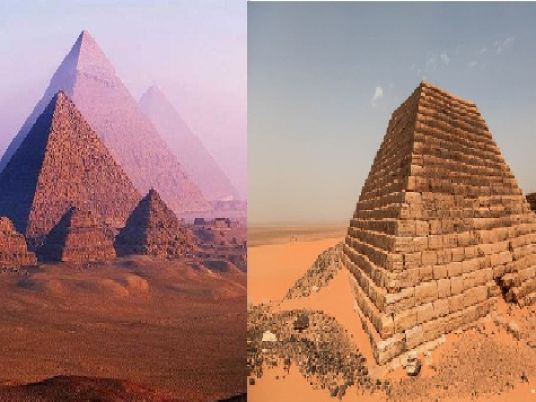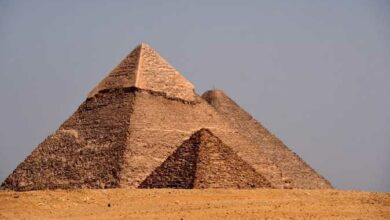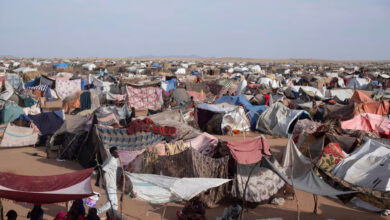
The Sudanese Minister of Information, Ahmed Bilal Othman, claimed on Sunday that the Meroë Pyramids of Sudan are 2,000 years older than Egypt's pyramids. The Sudanese government is working to prove this to the entire world, he added.
These claims stirred up outrage among Egyptians, particularly history experts. Zahi Hawas, the former minister of antiquities, said the Egyptian pyramids are the oldest, especially the pyramid of Djoser which dates back more than 5,000 years.
Egypt has 132 pyramids which are considered to be among the oldest in the history of the world.
“The Sudanese pyramids belong to Egypt's 25th dynasty, known as the Kushite Empire, but the Egyptian ones have been known since the early dynastic period,” Hawas said. The Djoser pyramid was built during the third dynasty.
Othman, however, claimed that the Sudanese had ruled Egypt in the ancient era and the pharaoh described in Exodus (whom Moses was sent to) was a Sudanese pharaoh who ruled Egypt that time. He quoted Surah Az-Zukhruf 51 from the Quran to back up his claims: “And Fir'aun [Pharaoh] proclaimed among his people, saying: 'O my people! Is not mine the dominion of Egypt, and these rivers flowing underneath me. See you not then?'"
He pointed to the word "rivers" in the verse, saying that Egypt only has one river while Sudan is a country of many rivers. Therefore, he said, the pharaoh in Exodus was Sudanese not Egyptian. However, scientific and historical records show that the Nile Delta had seven distributaries in ancient times, of which only two main branches exist now. The Pelusiac distributary passed through to Sinai.
Hawas explained that Othman’s claims are baseless for several reasons; firstly, no artifacts have been found depicting the pharaoh from Exodus, therefore his identity cannot be confirmed.
Some people pointed to the Merneptah stele in the Egyptian Museum in Tahrir. It was discovered in Thebes by Flinders Petrie in 1896 and shows the glorification of one of the poets to the King Merneptah, son of King Ramses II. Some argue that the word “Yezreel” found on the tablet means Israel and the Israeli people who were destroyed; other scholars interprete to refer to the Bedouins of Sinai.
“We cannot consider this stele as evidence. Poets in ancient Egypt glorified the king when he was alive, not after his death. We cannot rely on religious texts either to determine historical information,” Hawas said.
Mohamed Abdel-Aty, a professor of Islamic Sharia in Al-Azhar, told Al-Arabiya website that the Quran details the story of Moses and the Pharaoh over the course of several verses in which Egypt is clearly mentioned. Moreover, Mount Tur and Sinai were both mentioned in these verses, which proves beyond a doubt that the pharaoh mentioned in Exodus was an Egyptian king, he concluded.




